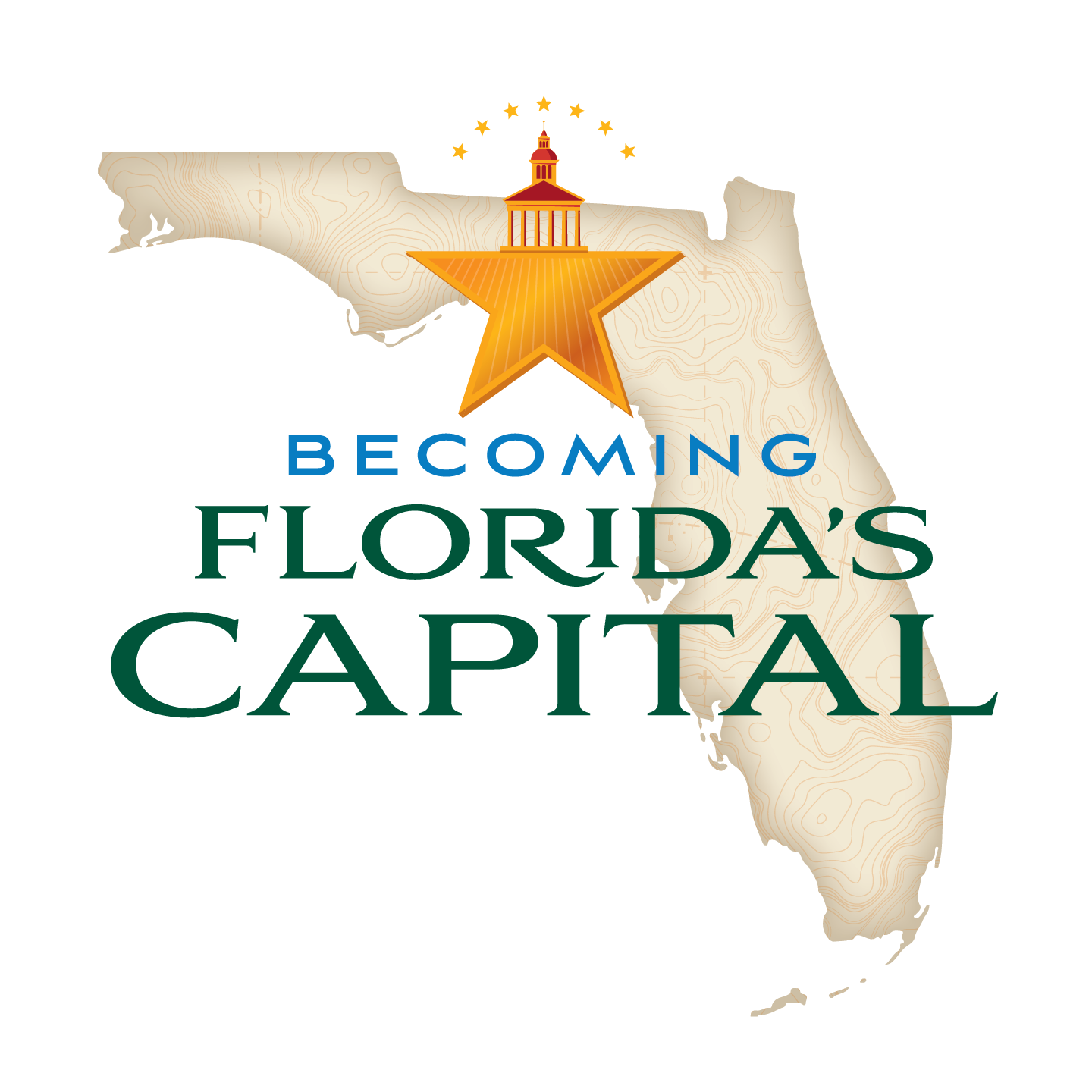
Two hundred years ago, on March 4, 1824, Governor William Duval announced Tallahassee as the site for Florida’s new capital city. Local lore attributes the decision to two commissioners sent on a legendary journey, however, Tallahassee’s tale begins much earlier. In this temporary exhibition, the Florida Historic Capitol Museum invites you to explore the historical actions and power struggles that defined early Tallahassee and led to the city Becoming Florida’s Capital. This exhibition and related programming complement the City of Tallahassee and Leon County bicentennial commemorations.
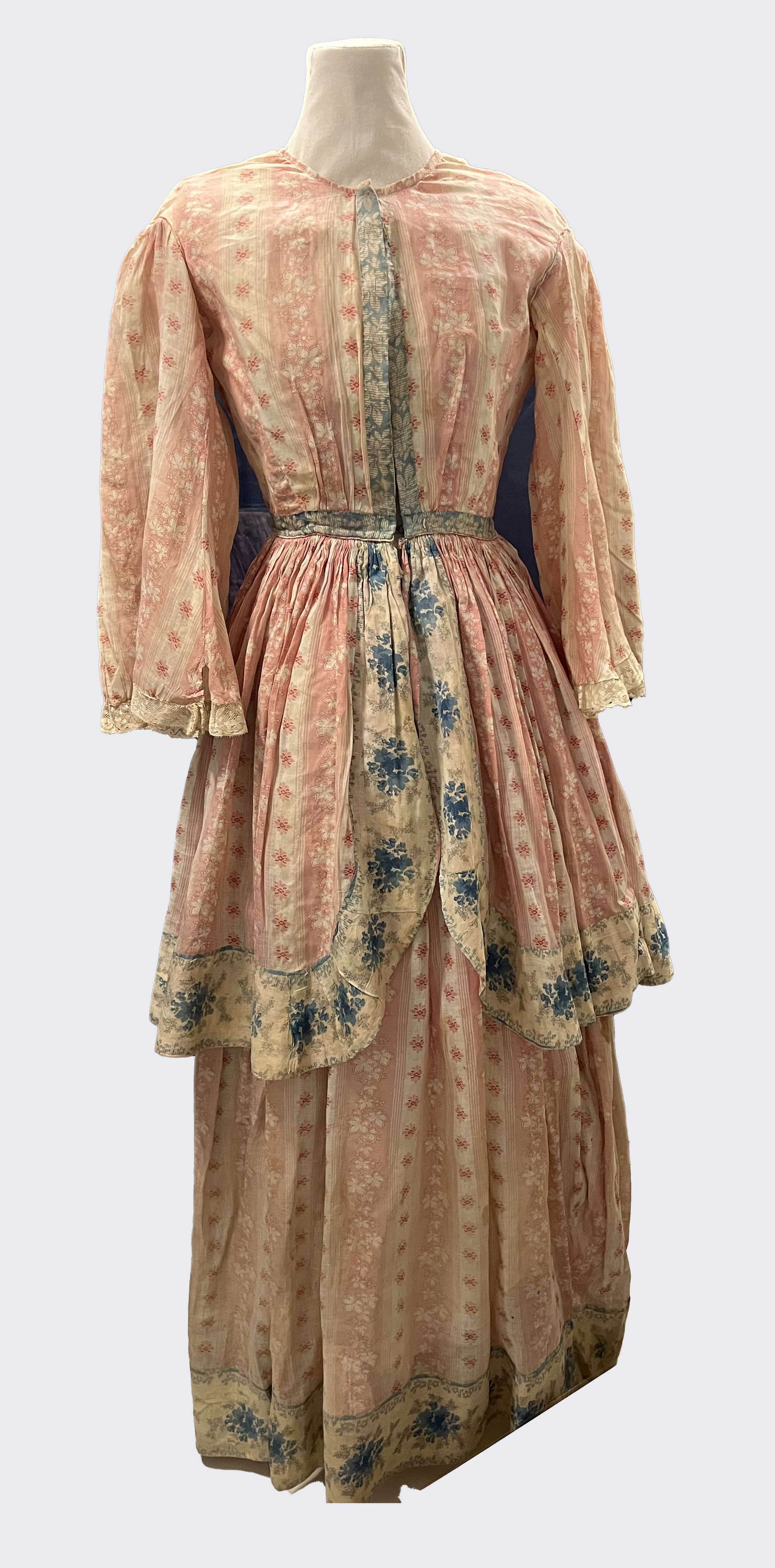
Catherine Murat’s Cotton Voile Day Dress, ca. 1850-1860
Courtesy of Tallahassee Museum
This dress is attributed to Catherine Daingerfield Willis Gray Murat, international socialite and wife of Jefferson County planter Achille Murat, who was nephew of Napoleon Bonaparte I. Murat’s dress includes several details typical of European and American fashion of the period and her status: fine cotton fabric; multiple indigo (blue) and mudder (reddish-pink) dyed patterns; open bell “Pagoda” sleeves with lace trim; and “Basque” bodice and paneling.
Collections records indicate the dress may have been passed down to one of Murat’s enslaved workers and preserved by their descendants before it was donated. In 1839, the Murat plantation, named Lipona, comprised of 1,000+ acres, equipment, livestock, and over 100 enslaved bondsmen, was used to pay their extensive debts. Following Achille’s death in 1847, Catherine managed a smaller plantation until she purchased a 500-acre holding that she named Bellevue. Explore and learn more about the Bellevue Planation at the Tallahassee Museum where the house, kitchen, and slave cabin have been preserved.
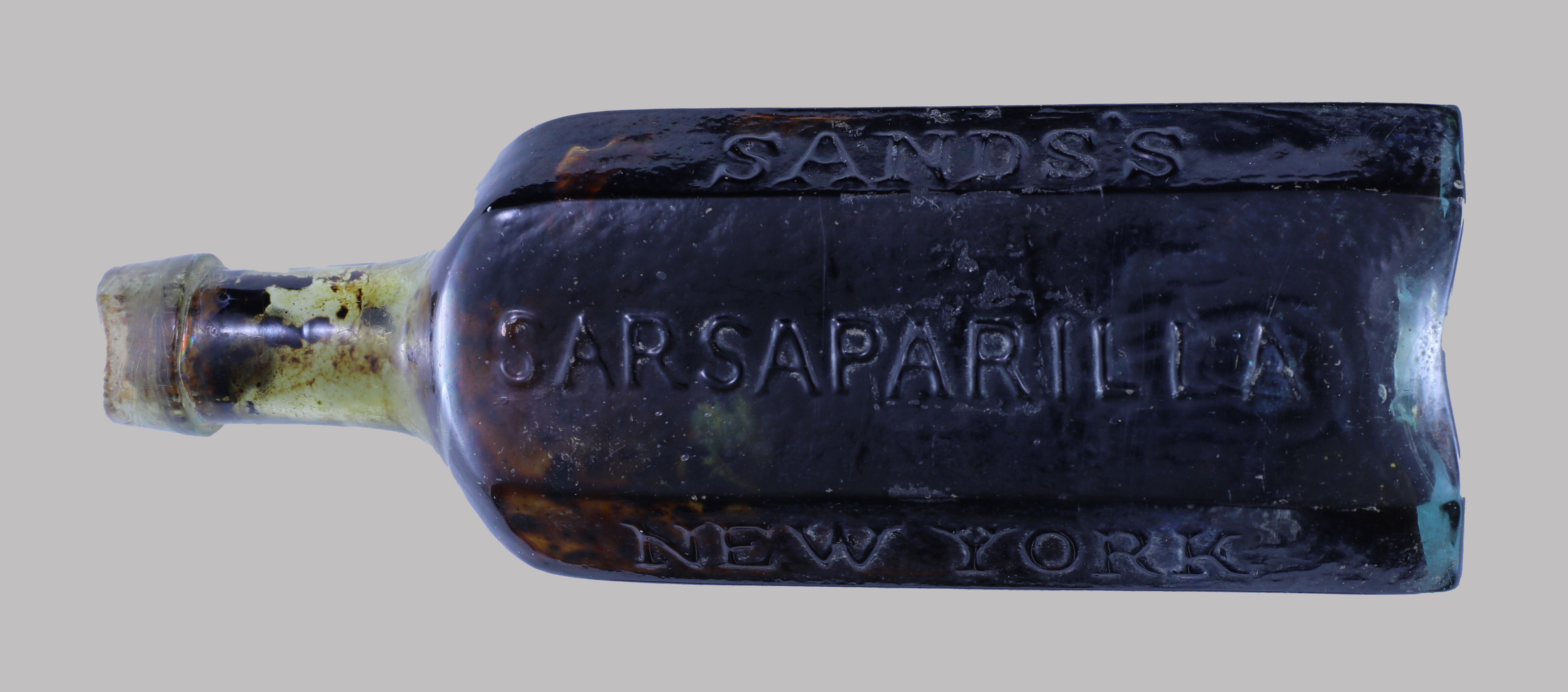
Courtesy of the Division of Historical Resources, Bureau of Archaeological Research
Sarsparilla was a tonic that was widely used for the treatment of various skin conditions in the 19th century. The drink had a flavor similar to root beer. This artifact is unusual because the stopper is still in place, indicating the medicine is contained within it.

St. John’s Episcopal Church brick, ca. 1838
Courtesy of the Division of Historical Resources, Bureau of Archaeological Research
Several Tallahassee residents raised funds to build the first St. John’s Episcopal Church. Carpenter John W. Levinus received a $10,000 contract for its construction. Contractors like Levinus depended on the labor and skills of enslaved people to complete public contracts. This brick has evidence of the maker’s fingerprints left behind while the clay was still wet.

Surveyor’s Chain
Courtesy of the Museum of Florida History, Tallahassee
The surveyor’s chain was used to measure distances in land surveying from the 1600s until the late nineteenth century. One hundred iron links measured a total of 66 feet long per chain. Eighty chains equal one mile and ten square chains measure one acre. Combined with a compass, the chain helped surveyors map Middle Florida.

Seminole Beaded Armlet, ca. 1960s
Made by Ruby Cypress, Seminole Tribe of Florida, Panther Clan
Courtesy of the Seminole Tribe of Florida Ah-Tah-Thi-Ki Museum, Catalog number ATTK 2203.29.4
This example uses the Muskogean loose-warp, double-weft technique, which traces back to the wampum belt tradition.
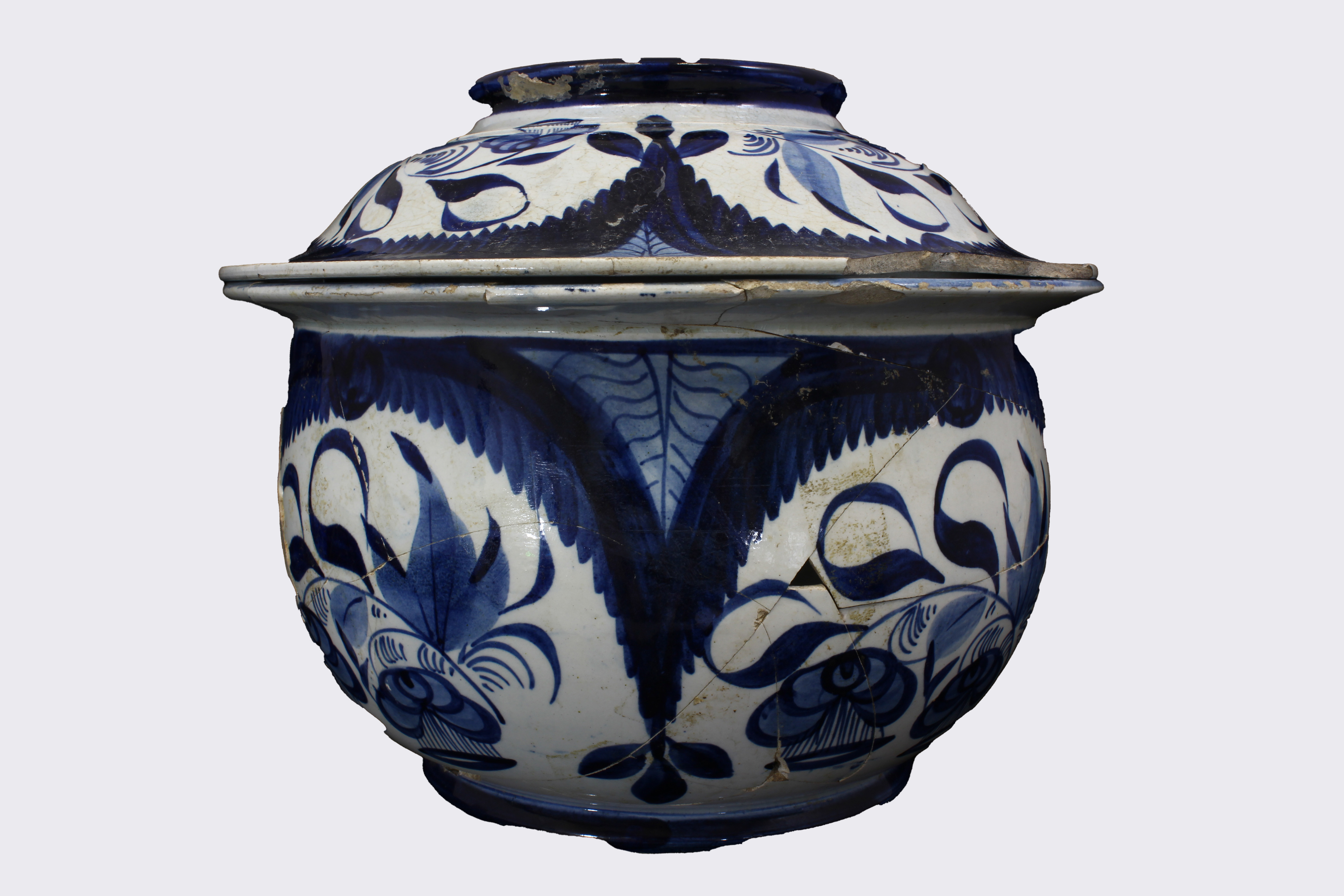
Chamber pot from the site of the Planters Hotel
Courtesy of the Division of Historical Resources, Bureau of Archaeological Research
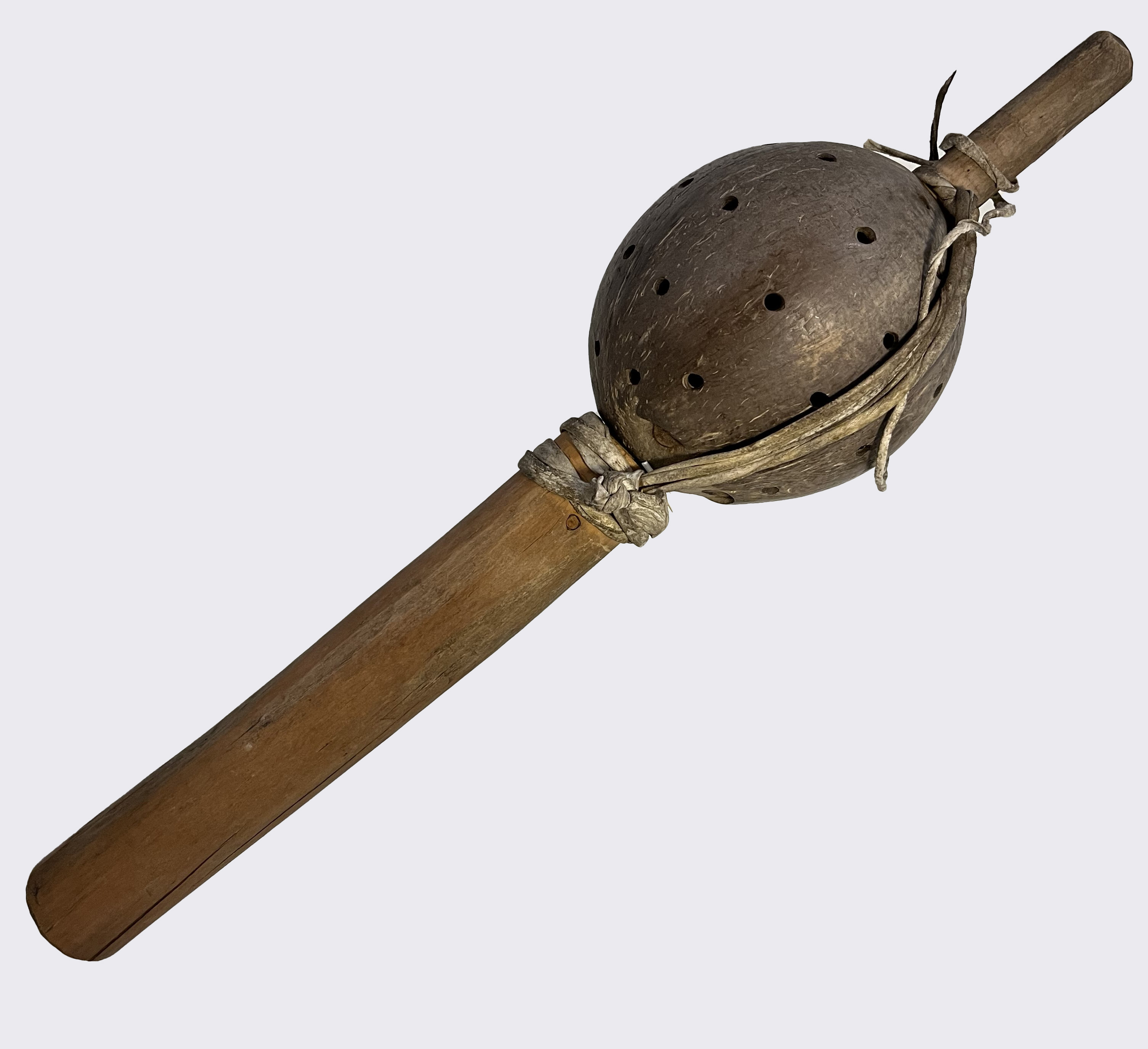
Seminole Coconut Rattle, ca. 1993
Made by Ingraham Billie, Seminole Tribe of Florida, Panther Clan
Courtesy of the Seminole Tribe of Florida Ah-Tah-Thi-Ki Museum, Catalog number ATTK 1993.25.2
This rattle is an example of those used by a dance leader during the annual Green Corn Ceremony.
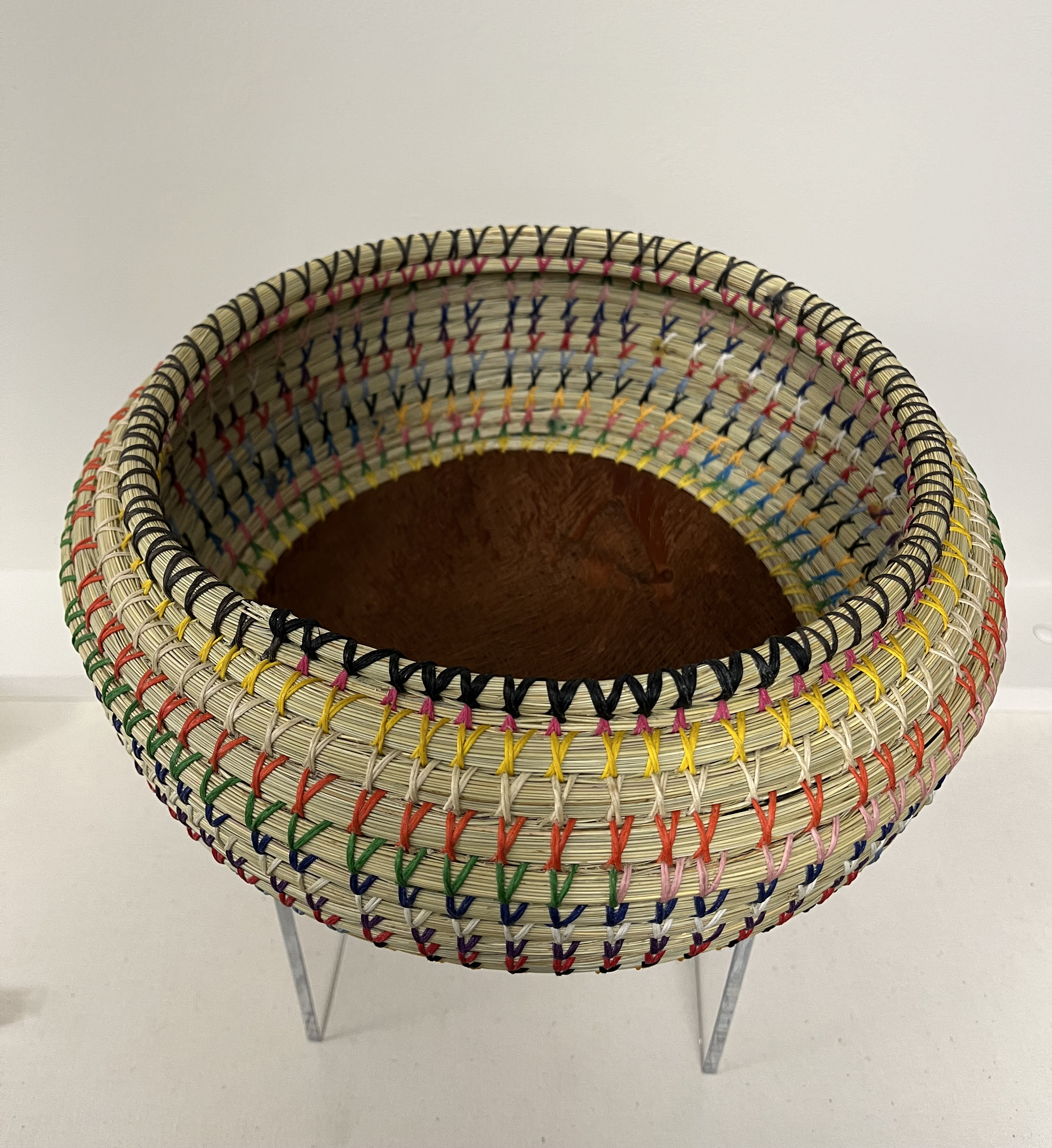
Hand Woven Sweetgrass Basket with Palmetto Fiber Center and Embroidery Thread Detail, 2024
Made by Randelle Osceola, Miccosukee Tribe of Indians of Florida, Bird Clan
Courtesy of the artist
Bureau of Archaeological Research, Florida Division of Historical Resources
Kevin Cate
Amy Cox
Marcus Curtis
Jason Daniel
Daughters of the American Revolution Museum
Florida Department of Environmental Protection
Florida State University
Harvard University
Leo Jim
Solan Jim
Library of Congress
Miccosukee Tribe of Indians of Florida
Mission San Luis
Museum of Florida History
National Archives and Records Administration
New York Public Library
Edward Ornstein
Randelle Osceola
David Scheidecker
Seminole Tribe of Florida Ah-Tah-Thi-Ki Museum
Seminole Tribe of Florida, Tribal Historic Preservation Office
State Library and Archives of Florida
Tallahassee Museum
The Grove Museum
Touchton Map Library, Tampa Bay History Center
University of Florida
Jackson Walker